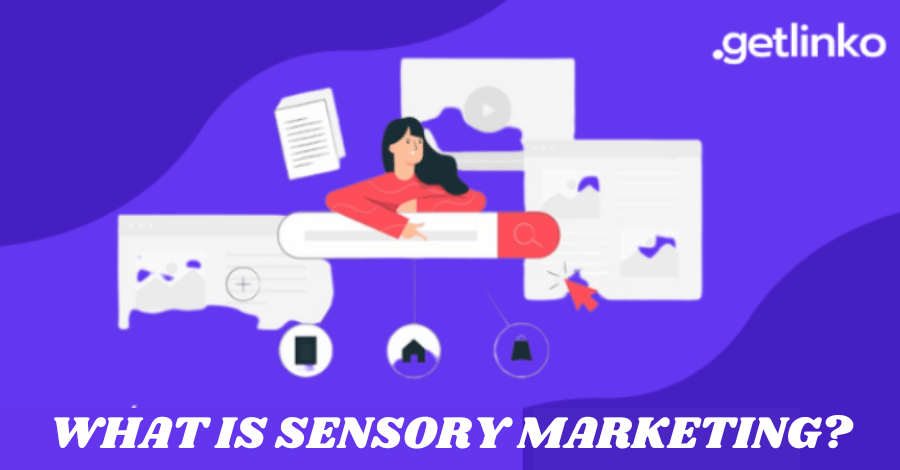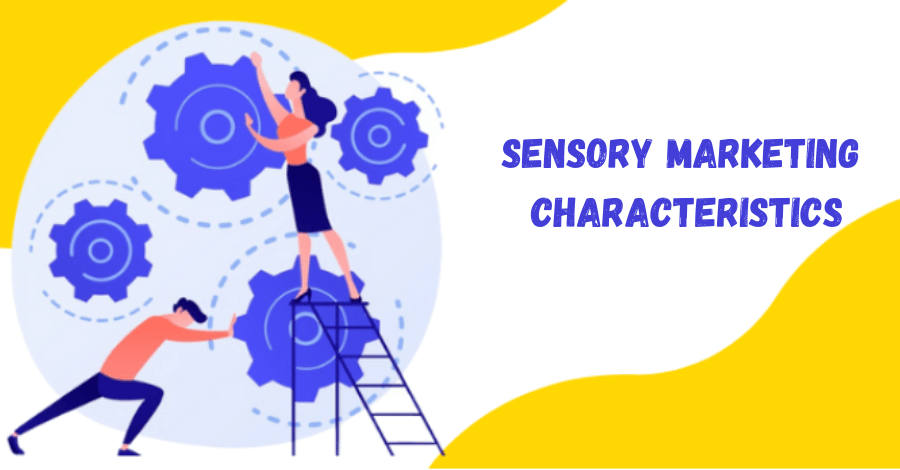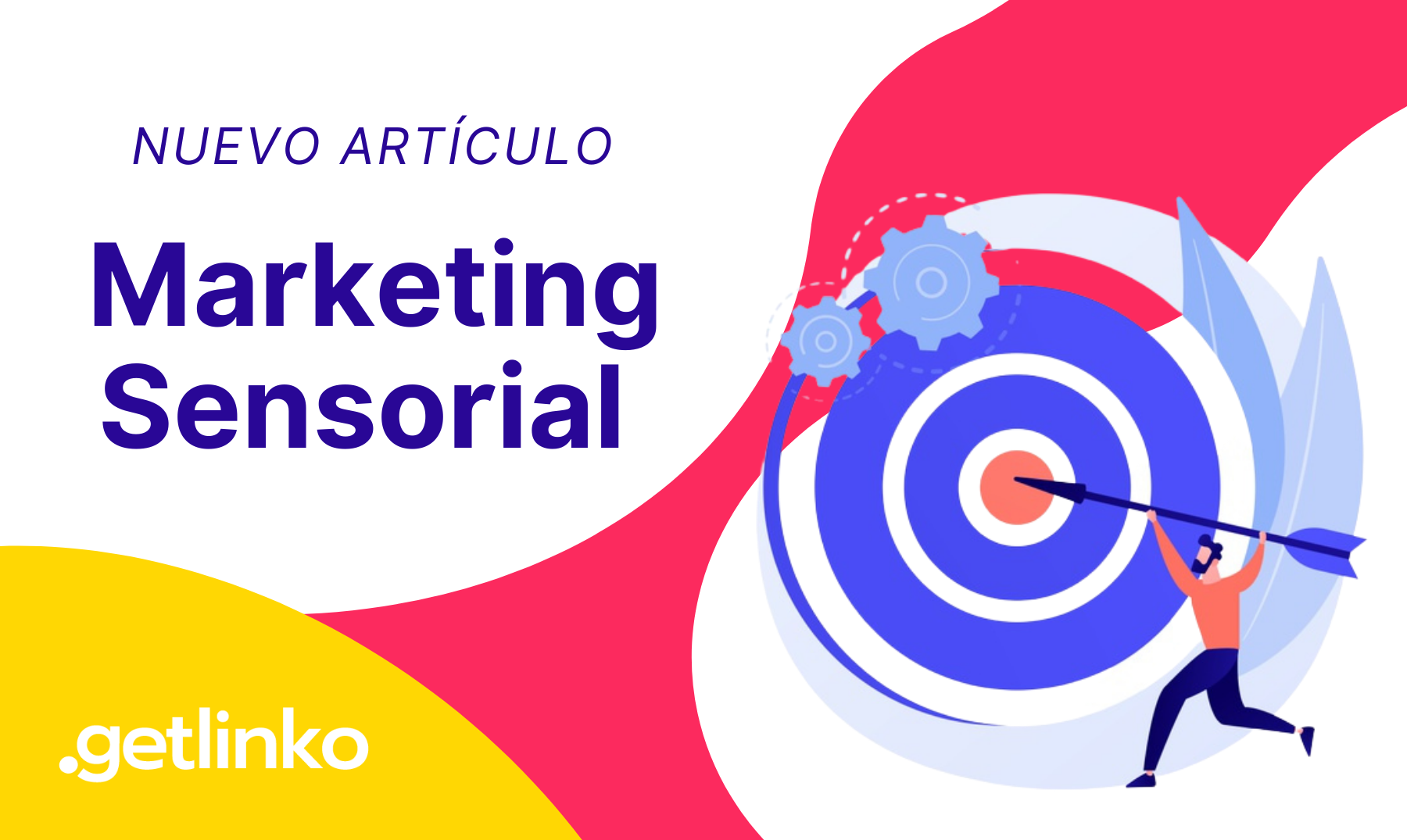Currently, the customer experience is not only focused on delivering a good service or personalizing their purchase. It also involves the generation of emotions that influence their behavior, motivations, and desires. One of the most effective strategies To generate emotions and a positive experience associated with the brand in consumers and that in marketing works to enhance the reach of results is sensory marketing.
What is sensory marketing?

Sensory marketing can be defined as a tool that seeks to create a greater connection between the consumer and the brand through emotional and behavioral actions that stimulate the senses and are favorable for the purchase of products or services.
Flavors, music, and aromas have an impact on the senses. These emotions generate a connection with people and awaken their desire to buy.
It is known that all human experiences and perceptions are initially acquired through the senses. This explains why this type of marketing seeks to create a unique sensory experience that engages the consumer and makes them associate positive values with the brand through the five senses: sight, hearing, smell, taste, and touch.
- Sight: it allows us to visually assimilate everything that surrounds us.
- The ear: sounds come to us through our ears.
- Smell: detects odors.
- Taste: captures the taste and texture of food
- Touch: allows us to come into contact with external objects through the skin and body.
On the other hand, sensory experiences also refer to memories and emotional bonds that we have created over the years. This causes our brain to activate and start working on our imagination, thus generating the desire to buy. This is why sensory marketing focuses mostly on the experience of users, such as their past, their emotions, their experiences, or their imagination.
According to Schmitt (2000), both reason and emotion drive the consumer to buy. However, they are not only looking to buy a quality product but also experience.
In this sense, Sensory Marketing is a marketing strategy aimed at consumer loyalty through differentiated services that provide moments of tranquility, harmony, and sensations of unique value. (Rabbit, 2007).
Characteristics of Sensory Marketing

Within the characteristics of sensory marketing, there are several purposes:
- Attract and retain potential customers: Points of sale will aim to create a pleasant sensory environment that makes the consumer enter the store wanting to return to it.
- Create a brand identity: Sensory marketing allows brands to define their own identity and personality.
- Humanize the brand: A company that takes into account the feelings and experience of the user is a brand of value and close to consumers.
- Highlight the value of the products: The user will identify the brand’s products with a positive sentiment due to a well-defined sensory marketing strategy.
- Offer a unique experience: The goal will always be for the purchase of a product or service to be a pleasant and unique experience.
Advantages of Sensory Marketing
- Strengthen branding construction.
- It reinforces the corporate identity. It is very important that the customer associates you with the quality that your product or service provides and in this way that your corporate fragrance reminds them of your values.
- Build customer loyalty.
- Differentiation from competitors.
- Retain the audience in your premises or establishment. Customers will stay longer in the place and perceive the products in a positive way, influencing the purchase decision.
- Create experiences for the consumer. 80% of the advertising we consume is visual, while 75% of everyday sensations are influenced by smell. The goal is to provoke sensations that generate a positive effect on people.
Disadvantages of Sensory Marketing
- Easy to copy by competitors.
- Very little acceptance by the people who visit.
- Experiences can be very good. But the overall service can be poor.
- The customer does not internalize the messages and is indifferent.
Types of Sensory Marketing

Visual
Visual marketing is, without a doubt, the most used type of sensory marketing as it is the most stimulated by the environment. The choice of colors and shapes in the conception of a product, the layout of a point of sale, and the implementation of promotional campaigns are key factors of success (or failure) in all types of companies.
It refers to all those resources that stimulate the consumer’s eyesight: images, shapes, and colors, among others. Visual marketing is probably the most important category of sensory marketing.
When doing visual marketing in the digital world, you should have one goal in mind: to make sure that your target audience identifies your company through advertising, banners on the web, pages on external blogs, or your own website. For example, your website will be the primary visual marketing tool on the internet. The important thing on a website is to create an atmosphere through a visual atmosphere.
Visual Sensory Marketing Strategies:
- High-quality images and videos on websites. (Avoid blurry images).
- Unique images that represent your brand.
- Call to actions (CTAs) for users to take valuable actions on your website.
- Photos of the product or service you’re selling so that it’s the first thing users notice on the web.
- Structure of the website to make it easy to navigate.
- Share quality content on all communication channels, both offline and online (social networks).
Olfactory
Olfactory marketing is the one that provokes the highest level of sensation, so it is very connected to emotional marketing. For example, in the Walnut Unlimited study, sports store Intersport managed to increase sales of football products by 26% by adding the smell of grass cut in that area.
It doesn’t matter if our brand sells clothes, perfumes, or cars; the use of scents in stores and having a clean and smelling good environment make your point of sale more attractive. The key to a successful scent marketing strategy is to make it memorable and creative to find ways to differentiate yourself from the competition so that the next time customers want to buy something, your business is one they come back to.
Olfactory Sensory Marketing Strategies:
- Online and offline sensory marketing strategies often go hand in hand.
- Capture leads and send users sample products with smells to link them to your brand.
- Send samples to interested users in exchange for their emails.
Auditory
Sound can play an important role in generating emotions towards users. Associating music with a message is a good way to make the consumer remember it. However, music is also important for sensory marketing users, as research highlights the impact of music on behavior.
The goal of sound marketing is to facilitate the memorization of a brand or to better understand the attributes of a product through sounds. If we pay attention, we will see that different brands use different styles of background music in their physical stores, which form a very important part of the shopping experience.
Auditory Sensory Marketing Strategies:
- The sound produced when opening a mobile app.
- The credits of a game.
- Playlists on Spotify or Deezer.
- Podcasts.
- Audiobooks.
Gustatory
When strategies include actions that stimulate our senses to attract attention, the odds of impulse buying are much higher. No matter what marketing strategy you pursue, your products will always be at the center of the consumer’s purchase decision. Therefore, it is very important to promote your products through a taste marketing strategy on digital communication channels.
Gustatory Sensory Marketing Strategies:
- Free samples are a great solution to promote your product.
- Get a review of the product, especially if it’s new. In addition, we put consumers at the center of the product by showing them that their opinion matters.
- Create a privileged relationship with the consumer. Taste is one of the most important human senses for conveying positive emotions.
- Email marketing.
Tact
In addition to touching the product, the overall perception of the environment is also influenced by feeling its texture and its location at the point of sale. Touch, in some cases, is also essential in the consumer acceptance process. Touch is one of the main determinants of the feeling of security and well-being when shopping.
Being able to touch or hold a product in your hands and feel its shape and texture gives the feeling of belonging, leaves no room for doubt, and validates the next step, the purchase.
Touch Sensory Marketing Strategies:
- Use solid materials that are pleasant to the touch, especially accessories such as business cards, to convey a trustworthy corporate image.
- Sustainable materials whenever possible to associate your brand with positive values.
- Incorporate protection into the product, such as cardboard or plastic, to show that the product is new.
Sensory Marketing: 3 Examples of Successful Campaigns

1. Coca-Cola
Coca-Cola is always an example when it comes to sensory experiences. The 2018 Christmas campaign used vision to persuade us.
Through an Android and iOS app, consumers could scan the can of the drink and have access to an exclusive augmented reality scenario. There were four episodes with stories of the brand’s famous polar bear.
2. Dunkin’ Donuts
Dunkin’ Donuts provoked its consumers and achieved very positive results in Seoul, the capital of South Korea, by putting into practice a sensory action. The company installed aroma diffusers with the smell of its coffee on some buses in the city. The fragrance was released every time an advertisement for the brand appeared on the radio on the buses and at points near a brand POS, further enhancing the sensory connection.
3. Spotify
Spotify leverages all of its data to create personalized playlists and provide a unique experience for each user. Spotify doesn’t just focus on sound marketing; it goes far beyond that and has also focused on visual marketing campaigns, both offline and online.
At the end of 2016, Spotify launched its “Thank you 2016, it’s been weird” campaign, giving “rare” highlights of user activity on the app.
Final Words
Sensory marketing tailored to customer sensations can be an innovative experience. The financial market has a lot of potential for improvement, as the experience of going to an agency has remained consistent over the past years. Seeing a product through a display case is not the same as the experience of feeling and smelling it. This is where sensory marketing comes into play. Many consumers would recommend a brand if they find it a pleasant sensory experience, so it’s even an effective tool to incentivize customer promotion.
By knowing what sensory marketing is, it is possible to apply it to achieve a greater presence in the customer’s memory and position ourselves among their purchase options. This type of marketing adapted to the line of business can provide short, medium, and long term benefits.


